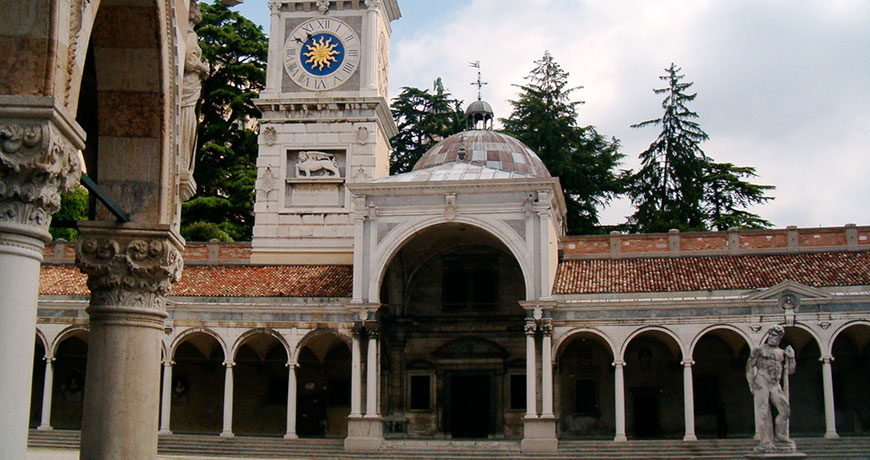Touristic information: Udine

Udine, of unclear Roman origin and militarily fortified, became part of the Aquileia Patriarchate in the 10th century. Just two centuries later it became the centre of an active market, and it's importance grew until it was chosen as the seat of the Patriarchate. In 1420 it became part of the Venetian Republic with the rest of Friuli, and remained under the protection of Venice until the arrival of the Austrians in the 16th century. In 1511 a devastating earthquake tore down most of the city. Reconstruction works started immediately, but from then on Udine took on a Renaissance appearance. Udine remained part of the Kingdom of Lombardy and Venetia until 1866, when it became part of the Kingdom of Italy. At the centre of Friuli, the setting of war in both world conflicts, Udine and its province played a major role, as shown by the scars that can still be seen on its territory.
The Castle, rebuilt after the 1511 earthquake, surveys the city from the height of the hill. Inside it is interesting to see the hall where the Parliament della Patria del Friuli assembled. The castle is also a museum and has an Art Gallery, a drawing and prints gallery, and an archaeological museum which is particularly important for its collection of ambers from Aquileia and the Museo del Risorgimento.
Nearby, visit the church of Santa Maria di Castello, the oldest in the city although heavily modified throughout the centuries. The façade and the bell tower are Renaissance whereas inside there are frescoes from different ages, some of the most marvellous in the whole of Friuli.
Piazza Libertà is the heart of the city, built on a fairly irregular terrain and developed on various planes. The Loggia del Lionello, the Loggia, the Tempietto di San Giovanni and the Clock tower, all buildings of traditional Venetian kind, surround the square.
A few kilometres from Udine lies Palmanova, called the "star city" because it is entirely built inside a star-shaped fortress. The fortress was built between the 16th and the 17th century, to defend Friuli against Turkish and Austrian invaders. It is not the only star-shaped city in the world, but it's the only one in Italy: we certainly recommend a visit. A little further is Aquileia, a city firmly tied in to Udine's history. Founded by the Romans, it was the site of an important Patriarchate which at one point included the whole of Friuli and Istria. The Basilica is particularly interesting, founded in the 9th century on the remains of a pre-existent early Christian basilica, with beautiful mosaic floors.
Every year, between September and October, Friuli Doc is dedicated to all those who want to discover Friuli. The event is mostly stalls with regional wine and food specialties, but the city streets are also full of culture and folklore tradition. There are often delegations from other countries, bearing witness to Friuli's millenary tradition of a land of meetings and cross-roads.
